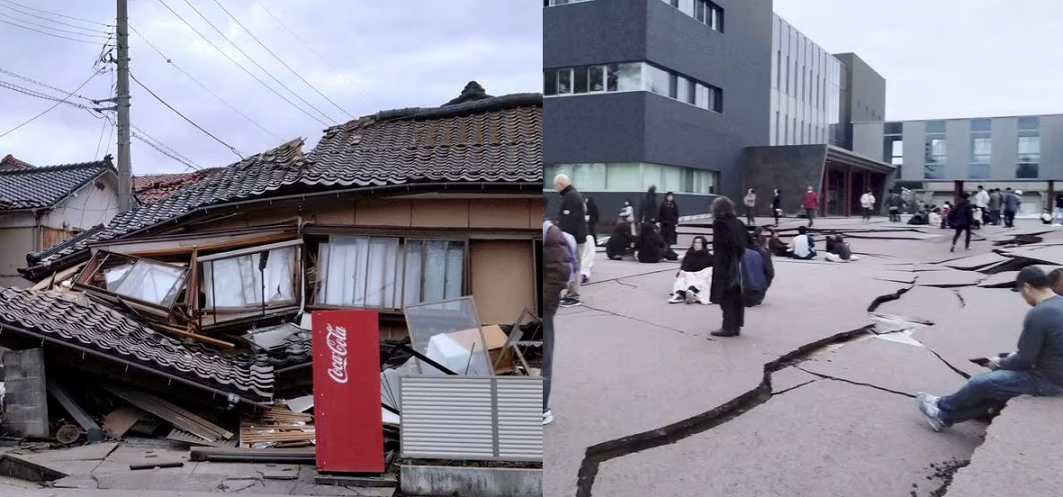
In a startling turn of events on the first day of the new year, central Japan was rocked by a powerful earthquake, measuring a preliminary magnitude of 7.6, on Monday. The seismic activity triggered tsunami warnings along the west coast, prompting urgent evacuations, causing power outages, and disrupting transportation services to the affected regions.
View this post on Instagram
The quake generated waves of approximately 1 meter along parts of the Sea of Japan coast, with authorities anticipating larger waves. The Japan Meteorological Agency (JMA) issued tsunami warnings for the coastal prefectures of Ishikawa, Niigata, and Toyama, marking the first significant warnings since the devastating earthquake and tsunami of March 2011.
Residents along the affected coasts were urged to evacuate immediately, with a major tsunami warning indicating the possibility of waves exceeding 3 meters (9.84 ft). Russia also issued tsunami warnings for its far eastern cities of Vladivostok and Nakhodka.
As reports emerged, images showed destruction in the coastal city of Suzu, with a building collapsing in a plume of dust, and a substantial crack appearing in a road in Wajima. The quake's impact reached the capital Tokyo, located 500 km away, where buildings experienced noticeable tremors.
Top government spokesperson Hayashi Yoshimasa confirmed that some houses had been destroyed, and army units were mobilized for rescue operations. However, the full extent of the damage is still being assessed.
View this post on Instagram
Prime Minister Fumio Kishida, in a press conference, warned residents to stay vigilant and prepared for potential aftershocks. The JMA official, Toshihiro Shimoyama, suggested that more strong quakes could occur in the region in the coming days, as seismic activity had been simmering for over three years.
More than 36,000 households lost power in Ishikawa and Toyama prefectures, according to Hokuriku Electric Power. High-speed rail services to Ishikawa were suspended, and major telecom operators reported disruptions in phone and internet services in affected areas.
The aviation sector was also significantly impacted, with Japanese airlines ANA and Japan Airlines altering flight schedules and rerouting planes. One of Ishikawa's airports was closed due to the earthquake.
View this post on Instagram
Despite the intensity of the quake, Japan’s Nuclear Regulation Authority reported no irregularities at nuclear power plants along the Sea of Japan. The 2011 earthquake and tsunami had led to nuclear meltdowns in Fukushima, causing widespread devastation.
Monday's earthquake, occurring during the public holiday when millions traditionally visit temples to mark the new year, added to the challenges faced by the Japanese people. In Kanazawa, a popular tourist destination, a torii gate at the entrance of a shrine collapsed, leaving anxious worshippers observing the aftermath.
Residents, recalling the trauma of previous earthquakes, evacuated to designated shelters. Ayako Daikai, a Kanazawa resident, evacuated with her family, stating, "I also experienced the Great Hanshin Earthquake, so I thought it would be safest to evacuate."
As the affected regions grapple with the aftermath of this powerful earthquake, the focus remains on rescue operations, assessing damage, and providing support to those impacted. The resilience of the Japanese people will once again be tested as they navigate the challenges brought on by this unexpected seismic event.
News Source: Reuters.com